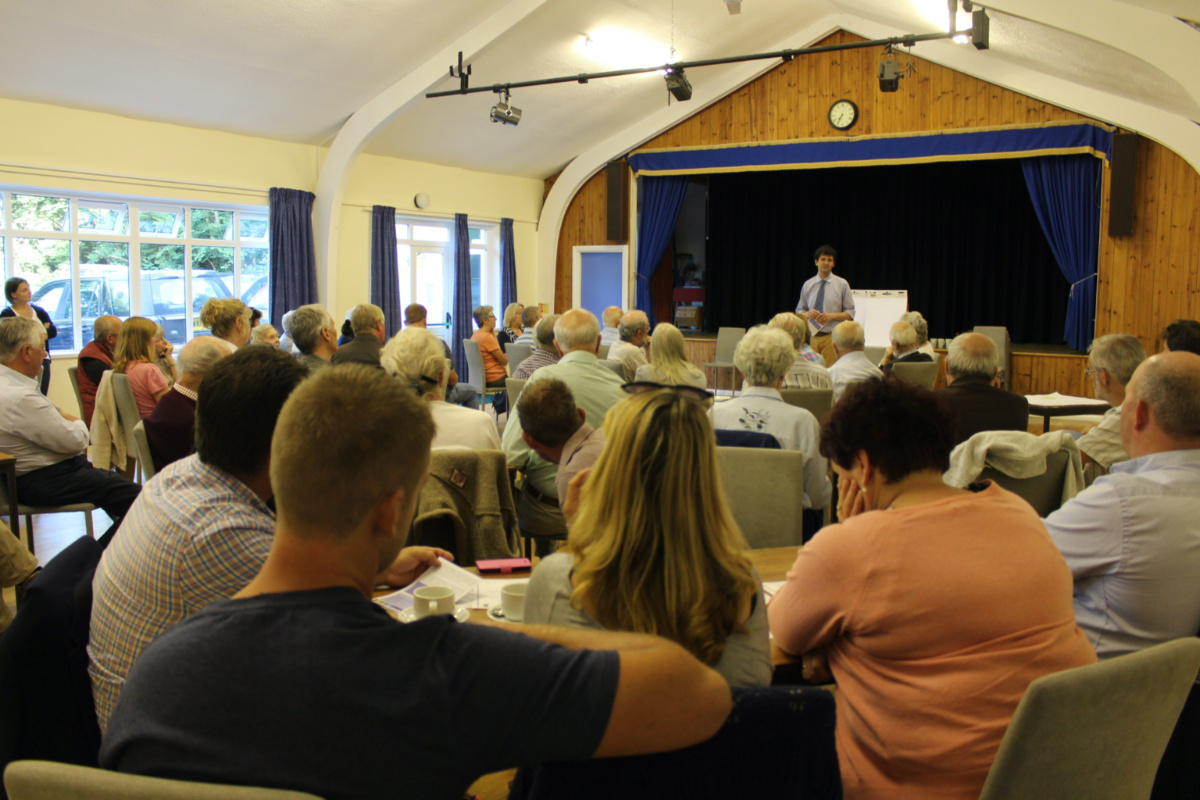
ANGELA YOUNGMAN reports on an innovative project in Devon to help rural communities keep their churches open…
Rural churches face special problems. Located in villages often miles from each other, these are churches that have existed for hundreds of years and are very much part of the local community. But maintenance costs can be high, and congregations relatively small. Added to that, there may be no other facilities for worship or as a centre for the community for miles around.
Now, an innovative project in Devon in south-west England is helping local communities keep churches open by finding solutions ranging from creating flexible space to pilgrimage routes.

A community consultation underway as part of the Growing the Rural Church project. PICTURE: Courtesy of Growing the Rural Church.
“Rural churches define the place, the community, the village,” says Sarah Cracknell, project manager of Growing the Rural Church in Devon. “People care about their parish and their village. Fundamental to this is the connectional issue, the concept of a village. People identify with their village church.”
Cracknell says the project’s origins go back to 2016 when the property team within the Church of England’s Diocese of Exeter looked at the long-term financial responsibility of keeping churches in good condition.
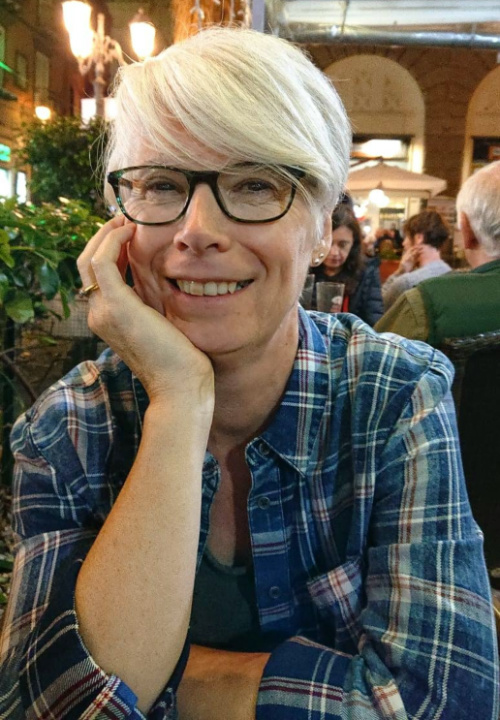
Sarah Cracknell.
“Rural churches define the place, the community, the village. People care about their parish and their village. Fundamental to this is the connectional issue, the concept of a village. People identify with their village church.”
– Sarah Cracknell, project manager of Growing the Rural Church.
“They recognised that there was a need to prepare for the long-term future,” she says. “This enabled us to bid for strategic funding from the [Church of England’s] Church Commissioners, resulting in a seven-year project to explore options. There were four areas we had to cover: the ways rural communities could find new uses for church buildings, sustainable structures to sustain the buildings, how we could create mission to address their community and creating a system of best practice to who what could be done within other dioceses. “
The resultant eight year project began in January, 2017, backed by a £1 million grant from the Church Commissioners Strategic Development Fund with additional funding from the Diocese of Exeter.
Cracknell says the initial focus of the project has changed and evolved as a result of experience.
“You cannot separate the functionality of running a building from the mission of the church within the community. We had to sit down and work out vision and mission before we could focus on the practicalities,” she says.
“This was hard for churches to understand this. We really struggled at first. Churches were understandably more interested in repairing a hole in the roof than discussing their mission and role in the community. Once they had started doing that, they could see why we were insisting on it and it made a difference. Projects became embedded in the community and we gradually started moving towards every project having a mission focus.”
We rely on our readers to fund Sight's work - become a financial supporter today!
For more information, head to our Subscriber's page.
COVID lockdowns created an unexpected opportunity to step back and take a close look at all that had been happening since the project’s launch in 2017. Cracknell and her team set about trawling through the data that had been created, exploring what had been achieved and learned as well as exactly what people had been wanting to know during the many face-to-face meetings that had taken place since its launch. This enabled the team to see how they could create a much bigger project by using their resources more efficiently.
“We created a basic tool kit containing all the frequently asked questions,” says Cracknell. “This could be downloaded to provide a basis for future work with a church. Webinars could be held to provide help on similar subjects for up to 20 churches at a time via zoom. This increased the capacity of our team, freeing them up to highlight where we could best use our services and identify where we needed to go for face-to-face meetings. We always go to meetings with communities to help explain why a church is having problems because we can act as the bad guys and ask the difficult questions. This frees up the local community and the local clergy to concentrate on how they can work together.”
Cracknell adds that project is “very supportive of the local community because we realise how important the church is within that community”.
“It might be the only central point within a village. Every church is unique, and has a different demographic. It is not the same as in a town. We have to identify what makes that church special and what it offers to the community.”
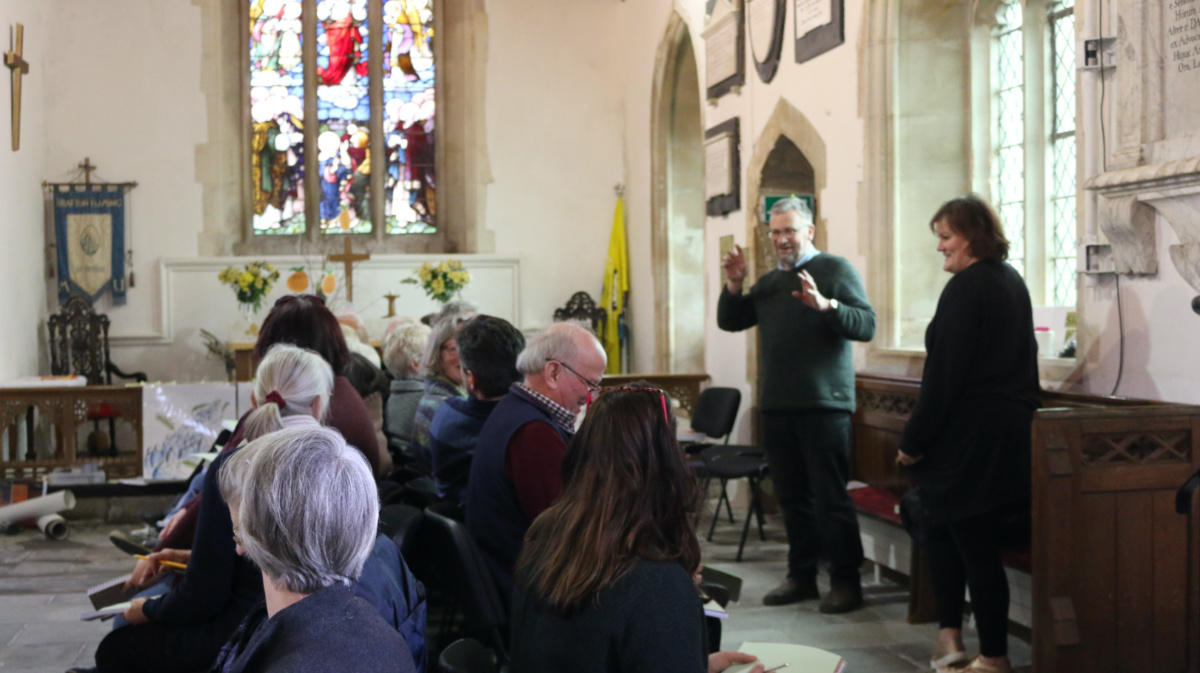
People participating in the Growing the Rural Church project in Devon. PICTURE: Courtesy of Growing the Rural Church.
Above all, the aim is to encourage the churches and the communities to come up with solutions rather than having them imposed from above. Such solutions offer a much greater chance of success, simply because the entire community is involved.
Rev Marc Kerslake is the rector East Clyst Churches, a collection of eight parishes with 10 churches and among those churches which have taken part in the project.
“It is very hard telling people that their church is not sustainable,” he comments. “[So] we have started a process of questioning and calling public meetings to build a vision for the churches. Growing the rural church makes people look at their community, their church and where it is heading.”
He says that being involved with ‘Growing the Rural Church’ is making a real difference.
“[Growing the Rural Church] is giving a future for rural churches. Rural churches have a much greater awareness of the ministry of presence, of the church within the environment. GRC shows that this is the diocese investing in you, you are not second class to the big cities and towns.”
The Devon Pilgrim project involves another group of churches.
“Devon Pilgrim is a concept evolved by a group of clergy in the parishes,” Cracknell explains. “Devon has four archdeaconries that meet in the centre of Dartmoor National Park but the clergy had rarely got together across the archdeaconries. We set up a moor meeting involving all of them, talking about experiences on the moor and its spirituality.
“What came out that meeting was that Dartmoor has a natural spirituality dating back over 4,000 years of history and heritage. There is something unique about Dartmoor; it has been a centre of pilgrimage for centuries visiting churches and sacred places. There has been a great resurgence in pilgrimages. People were coming to the area to explore this spirituality, but churches were not making the most of this heritage.”
As a result of this meeting, 10 churches decided to come together to create pilgrimage routes such as the Archangel’s Way, St Boniface Way and Sacred Waters Way under the overall Devon Pilgrim concept.
The routes, which takes in a church on a steep hill known as a tor, chapels of ease, well-known churches and some churches created as a result of industrial activity, were carefully chosen to link churches and places of spirituality focusing on providing pilgrims with an opportunity for contemplation, meditation, renewal rather than overt evangelism. They encourage people to connect with nature, and appreciate the importance of the natural environment. Walkers can explore different aspects of Dartmoor, walking through small villages and areas, which they might not otherwise have visited.
Rev Paul Seaton-Burn, rural dean and team vicar, is one of the founding members of the Archangel’s Way route.
“It is a brilliant project,” he says. “It is not just another walking route. It is a chance to bring together people of different denominations and backgrounds, people who are coming to explore the history of the landscape, people who are seeking answers to questions in their lives, to bring church and non-church together to taste the deep spiritual story and legacy that is all around us. We are tapping into a hospitality that our Devon churches have always offered, and there is a real contemporary need to re-engage with the natural world and explore their spirituality.”
He says the initiative has proved very successful.
“It is very popular. Other churches are now seeing the possibilities of doing something similar in their areas. We want to encourage such schemes where churches can work together.”
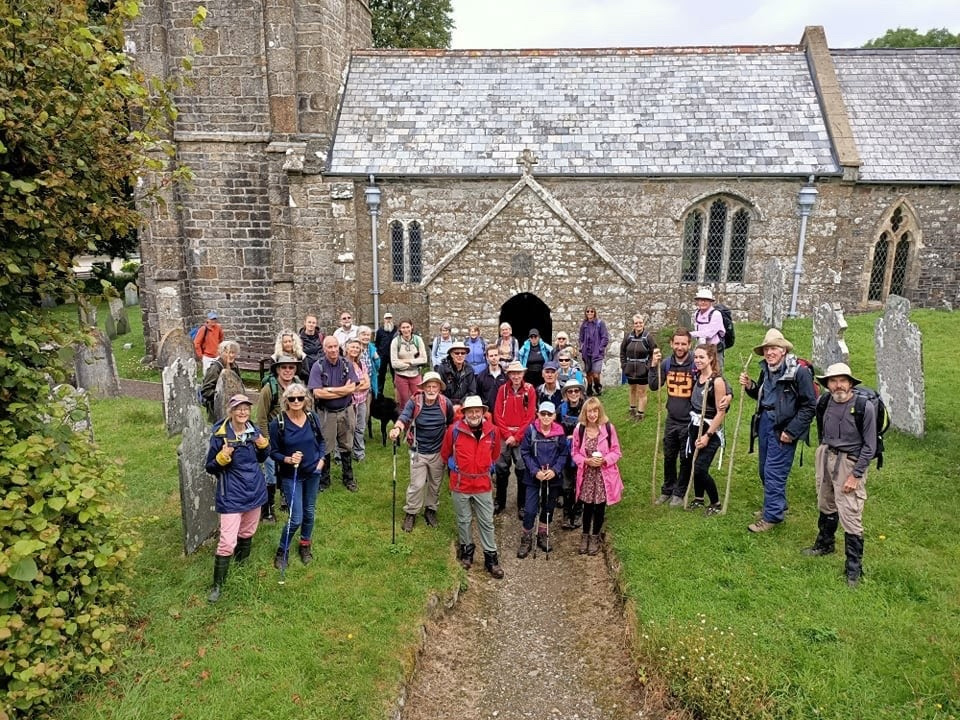
Walkers on the Archangels Way. PICTURE: Courtesy of Growing the Rural Church.
It has become clear that the church buildings are an integral part of the landscape and the community, as well as having a mission, a religious basis.
“You cannot separate buildings from the community or the mission,” explains Cracknell. “They work together. We are looking at church buildings in a different sort of way, they are part of the mission.”
One of the most frequently asked questions relates to the issue of leaving churches open, and unattended during the day to enable visitors and pilgrims to enter and explore as they wish.
“We tell them there is no such thing as an empty church,” says Cracknell. “They are filled with a cloud of witness over hundreds of years. People who might not go to a traditional Anglican service, or a new style service will happily sit in contemplation in a church building, recognising the value of being in a church where worship has been undertaken for generations. We want church groups to look at what people are saying about the building, what they write in visitors books and to focus on the experience of being in it, and their response to the building.”
Cracknell says the focus is about “encouraging people to see the buildings in a new light”.
“It is not a matter of moving pews around or taking them out to provide space that might not be needed. It is not just a roof over their heads, but a mission tool for the church. We have to work together with the building, the rhythm of life and the season, of letting the building talk to visitors.”
The project is also highlighting potential ways in which the building itself can contribute towards costs and upkeep. Since this is not part of the remit under the funding of Growing the Rural Church, Cracknell has taken on an additional role focusing on the development of ‘community interest businesses’. These are small businesses owned and operated by local community groups with all profits going back into the business. Such businesses can help attract income into the churches and ultimately the local area as well.
These businesses could link into the ways of generating income via tourism such as the Pilgrims Way, and provide useful community facilities. Typical projects that might be involved include community cafes and variations on glamping to suit the various localities, particularly targeting walkers who just want somewhere undercover to camp for a night but don’t want any luxuries.
“It is very basic,” says Cracknell. “Walkers and pilgrims might just want sanctuary for the night. Somewhere they can roll out their sleeping bags on a pew, use a camp bed. We would have a heater available and a local bakery would bring breakfast in the morning. We need to do more consultation and research and work out what would work in different churches around Devon.”
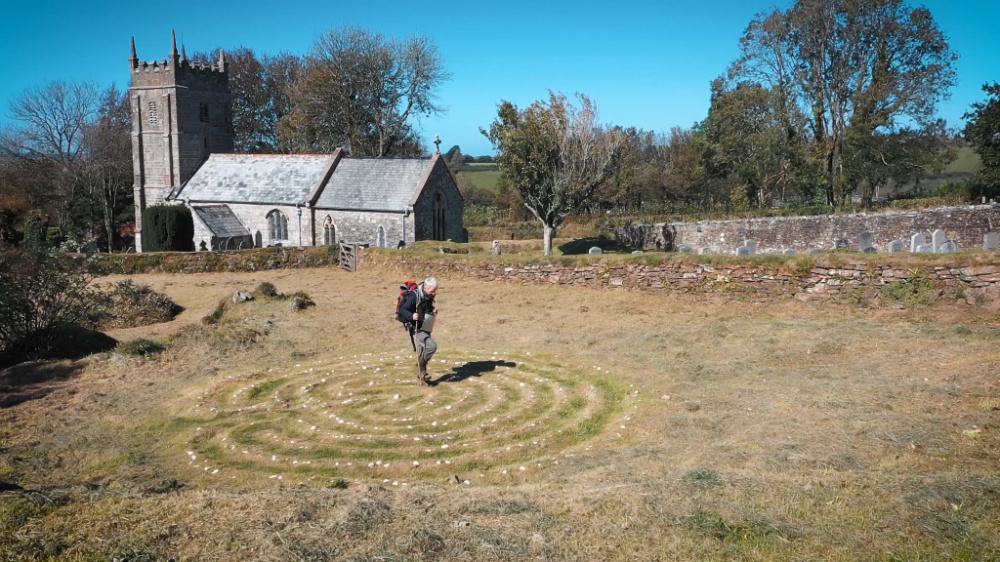
The Sourton Labyrinth is part of the Devon Pilgrim project. PICTURE: Courtesy of Growing the Rural Churches.
Above all is the need to ensure that all such projects are sustainable and do not overwhelm the locality.
“We need to maximise the opportunities provided by the tourism element without overcrowding the village, the community or the churches,” notes Cracknell. “It needs to be sustainable.”
Robert Atwell, Bishop of Exeter, says that while, for centuries, “village churches have been at the heart of rural communities”, rural life was now at a turning point.
“People are rediscovering the gift of the local, supporting each other and finding imaginative solutions to the many challenges that are confronting us. All this bodes well for the health of rural churches and the communities they serve.”





